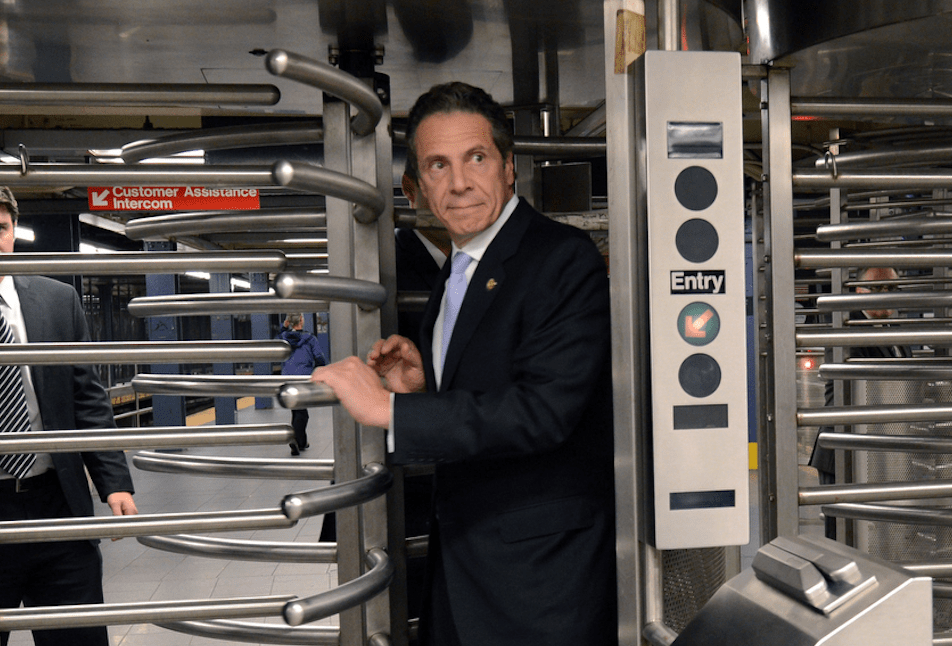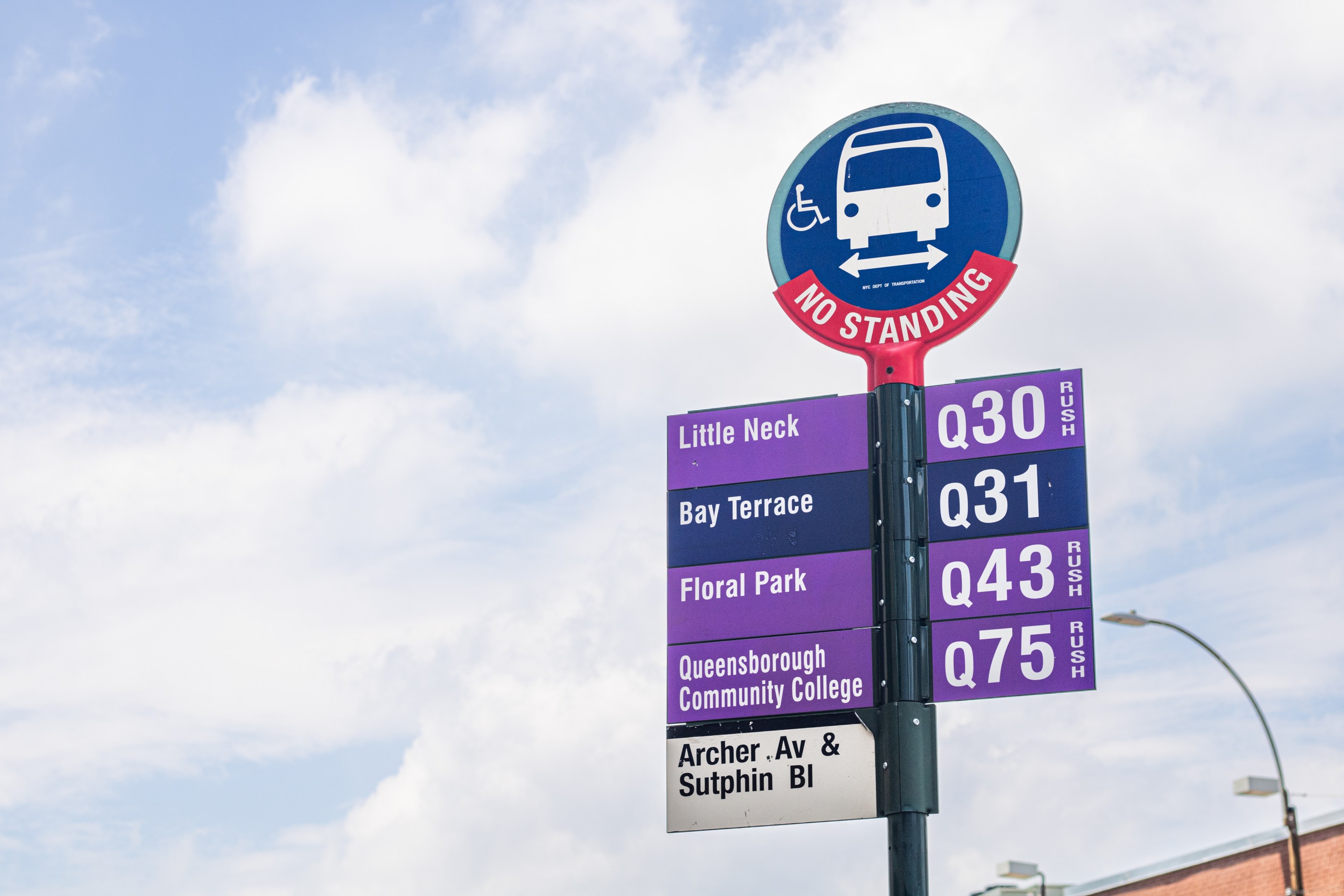Governor Cuomo's reign of terror on the MTA continues — but his ongoing attacks on a fiscally necessary fare hike and the transit agency's own credibility are undermining the region's transportation network at a critical moment.
Without additional revenue from regularly scheduled fare hikes, transit officials have warned that "painful" service cuts will be necessary to close the agency's budget deficit. But in an interview with the Times on Wednesday, Cuomo reiterated his opposition to the fare hike set that the MTA board is expected to approve tomorrow. But Cuomo's comments went beyond a mere objection to an increase in fares that the MTA says is necessary.
"I have no faith in what they say," Cuomo said. "Tighten your belt. Make the place run better."
His assertion flies in the face of analysis by MTA Chief Financial Officer Robert Foran, who serves under MTA Managing Director Veronique Hakim, a Cuomo hire.
“There’s clearly longer-term structural issues that we can address to make the MTA more efficient, but that’s just the point— they’re long term," said one MTA source familiar with the agency's financial planning. "We keep cutting in ways that are short-term. At this point, we’re going to start causing harm."
The governor's Times comments — which he reiterated Wednesday on WNYC — were just the latest salvo in the governor's months-long assault on the MTA, which began in earnest after he was reelected in November. For years, Cuomo treated transit like a disposable fiefdom, robbing its coffers for meaningless vanity projects while putting little public effort into addressing increasing service troubles for riders.
With the 2017 service crisis and subsequent hiring of Andy Byford, Cuomo seemed to tell skeptical city voters that, by putting a professional in charge, he'd turned a new leaf.
Now, with another four-year lease in Albany, the governor is reverting to his old ways, attempting to both disavow himself of the agency and strong-arm its leadership to do his bidding. Since November, he's claimed that fare hikes could be avoided if transit officials only did more to root out "waste," without showing any interest in identifying that waste (one obvious contender are the agency's labor contracts, which Cuomo personally negotiated).
The unilateral cancellation of the L-train shutdown showed just how easily the governor can steamroll the MTA to get what he wants. Last week, the engineers overseeing the project admitted, despite the governor's insistence that the shutdown was unnecessary, that a complete closure and tunnel rebuild "would have been advantageous."
That could spell disaster for the Byford's Fast Forward plan, released in May. The crux of the plan is to build rider confidence through outreach and transparency, then move forward on the difficult-by-necessary enterprise of shutting down whole lines in order to bring their signals and switches to modern standards.
Those shutdowns, if they still happen, are certain to cause consternation. But in exchange for that short-term pain, more than half of riders will be served by lines with modern signals within five years. Over three years of outreach and planning for the L shutdown, the MTA and city DOT created a model — in terms of both public outreach and service mitigation — that could be replicated in the future.
Byford has implored elected officials to not lose sight of the top-line goal of fixing the transit system through distracting "standoffs" over particular projects. Now, there's no telling where Cuomo won't stick his hands. Necessary and urgent things like bus network redesigns and transparency measures will be judged based on their political liabilities — not their vitality to the functioning of the nation's largest transit system.
If @NYGovCuomo s plan is to destroy public confidence in @MTA, how will @NYCTSubway /#AndyByford convince public that full line closures for #CBTC -- the heart of FastForward are best way to go? What wonderful innovators and transit pros want to work at a place being politicized?
— Reinvent Albany (@ReinventAlbany) January 23, 2019
"The core of the Byford plan is full-line shutdowns to do signals and switches at a much faster pace," said John Kaehny of the government watchdog group Reinvent Albany. "What Byford is trying to do is just absolutely at odds with what Cuomo’s doing."
And Cuomo's approach comes at a particularly odd time, given that the governor is pushing a fee — called congestion pricing — on drivers to enter Manhattan below 60th Street. That new pool of revenue is earmarked for transit improvements to be made by the MTA — the very agency that Cuomo says isn't working. That's an odd approach for someone who needs the votes of recalcitrant legislators in Albany, some of whom also share doubts about the MTA's credibility.
Yet on the radio on Wednesday, Cuomo took more shots at the MTA's staff and board, accusing them of negligence for not seeking a less impactful approach to the L tunnel project.
“If he’s unhappy with his own management team, he can remove the top managers and put new people in," Manhattan Institute researcher Nicole Gelinas told Streetsblog last week.
The governor's approach to the L train tunnel may be less effective, but it's also less painful — and short-sighted politics have always won the day at Cuomo's MTA.






